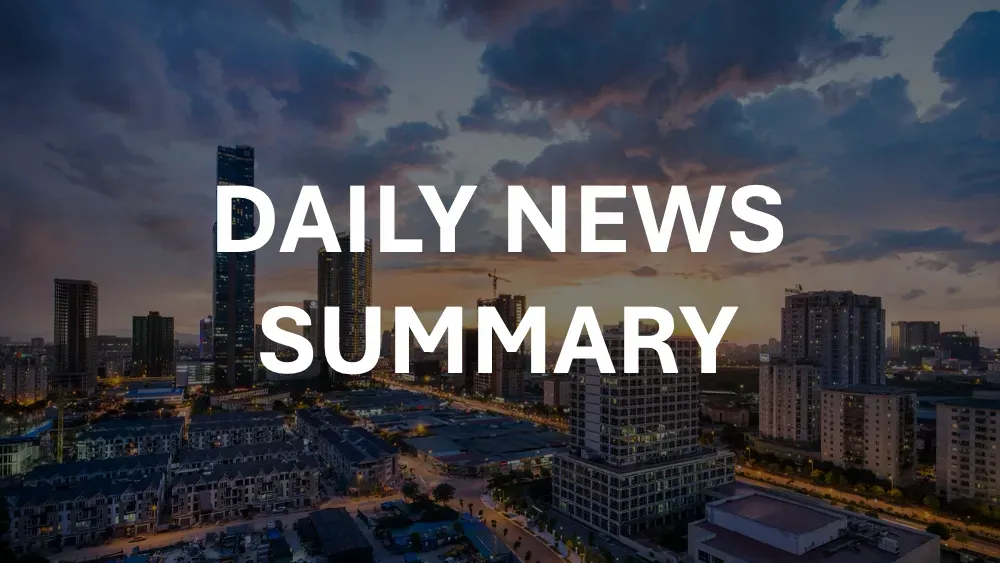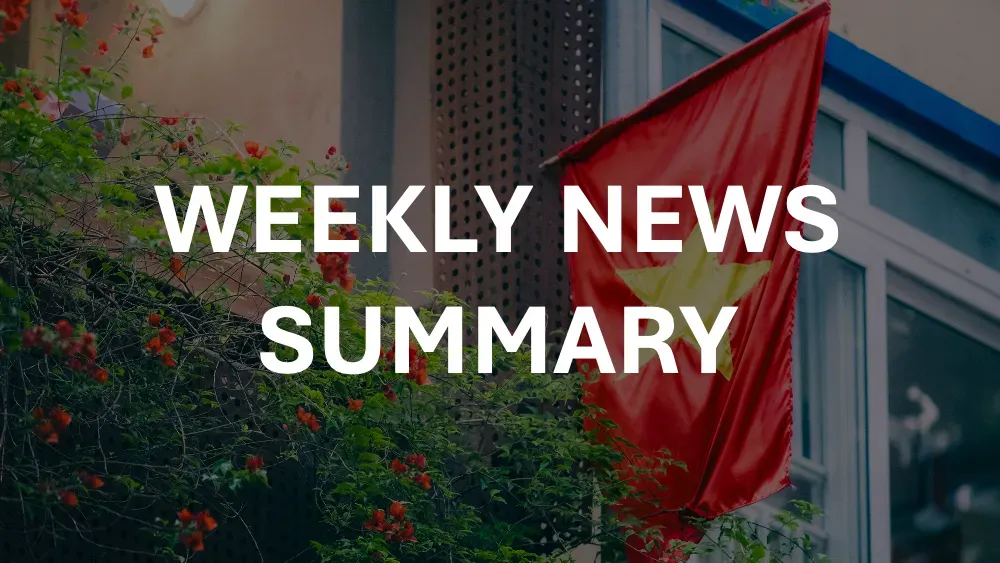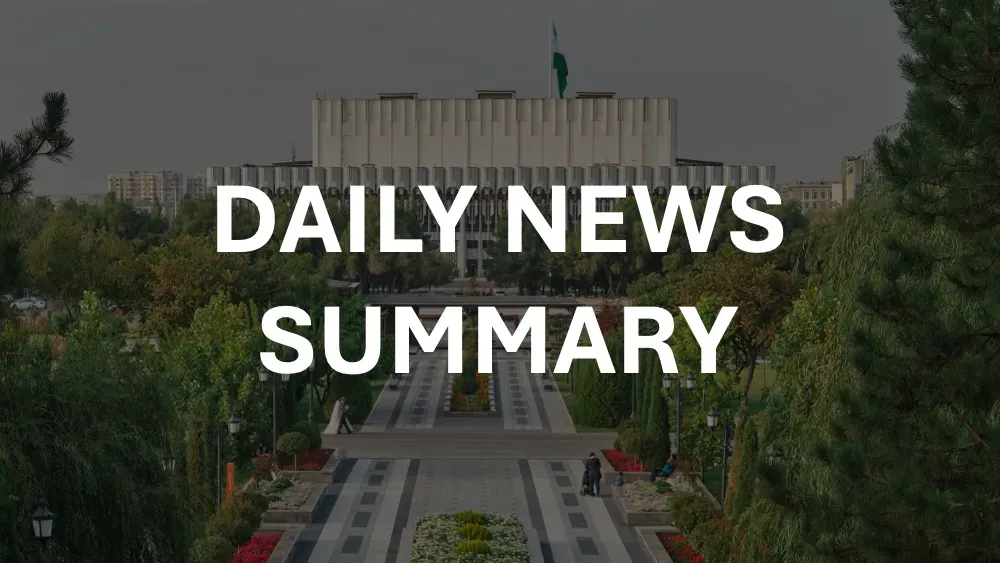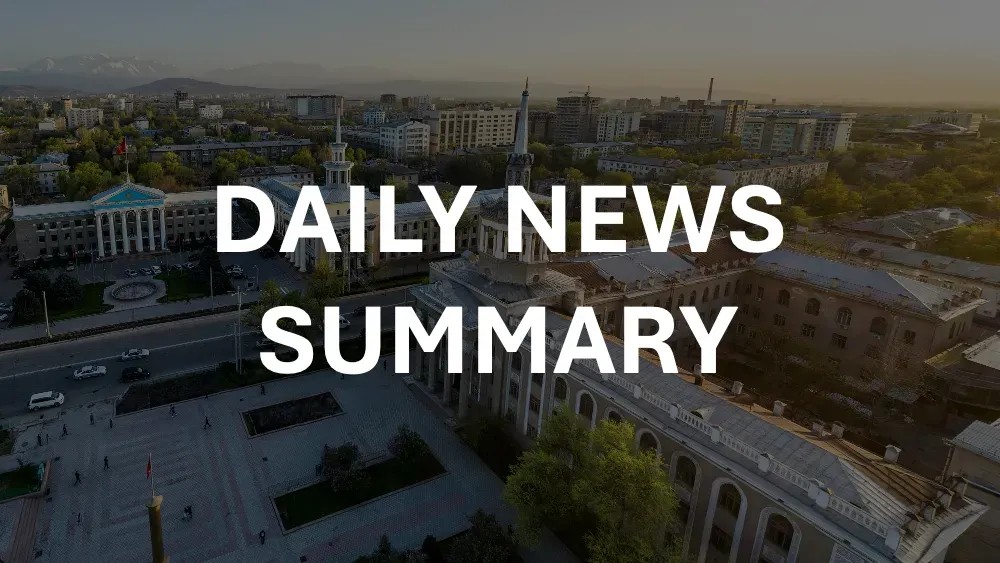📍 Get daily intelligence from Vietnam and Southeast Asia. Lexica News delivers local news that shapes global decisions—synthesized from local sources international media misses.
Introduction
Vietnam created 641 acres of new land in the Spratly Islands between June 2024 and March 2025, continuing a construction pace that places Hanoi on track to match or exceed China's total artificial land creation in the disputed South China Sea. This expansion unfolds quietly while Vietnam maintains $205 billion in annual trade with Beijing, creating a strategic paradox where economic dependence coexists with territorial assertiveness. The South China Sea hosts 11 billion barrels of oil and 190 trillion cubic feet of natural gas, with $3.4 trillion in global trade passing through these waters annually. For international professionals operating in Vietnam, understanding this delicate balance between sovereignty assertion and economic pragmatism provides essential context for assessing political risk, maritime security considerations, and the durability of Vietnam's strategic positioning.
Current Landscape: Unprecedented Construction Activity
Vietnam's island-building program represents the most significant territorial assertion in the South China Sea since China completed seven major artificial islands between 2013 and 2016. As of March 2025, Vietnam had created approximately 3,300 acres of artificial land, representing about 70% of China's total reclamation in the Spratlys. This figure includes both landfill for expanding land area and dredging for harbors and channels, with Vietnam's total dredging reaching 71% of China's 4,650 acres.
The construction activity accelerated dramatically starting in 2021, marking a departure from Vietnam's previous approach of maintaining minimal presence on its occupied features. Between November 2023 and June 2024, Vietnam created 692 acres in seven months, followed by 641 additional acres over the subsequent nine months. This sustained pace contrasts sharply with the sporadic construction efforts Vietnam pursued prior to 2021, when only 10 of its 21 occupied features had been expanded.
All 21 Vietnamese-occupied rocks and low-tide elevations in the Spratly Islands now feature artificial land expansion, up from just 10 four years ago. The expansion encompasses major features including Namyit Island, Sand Cay, Tennent Reef, Pearson Reef, Barque Canada Reef, Alison Reef, Cornwallis South Reef, Ladd Reef, Discovery Great Reef, Central Reef, and South Reef. Eight features began receiving expansion work in 2025, ensuring that Vietnam will likely surpass China's historical reclamation totals.
The infrastructure development focuses heavily on maritime logistics capabilities. Vietnam has constructed eight new harbors since 2021, bringing the total from four to twelve across its occupied features. These harbors account for 1,081 acres of Vietnam's dredging activity, indicating that enhanced naval and coast guard access represents a core strategic objective rather than simple territorial expansion.
Documented Military Infrastructure Development
Vietnam's construction activities extend beyond basic land reclamation to encompass significant military infrastructure. In late 2024, Vietnam completed a 2,400-meter runway on Barque Canada Reef, providing Vietnam with a second airstrip in the Spratlys alongside its existing facility at Spratly Island. The Barque Canada runway measures sufficient length to accommodate most military aircraft, significantly extending Vietnam's operational reach in the disputed waters.
The runway construction prompted China to publicly protest in February 2025, breaking from Beijing's pattern of relative silence regarding Vietnam's island-building activities. This Chinese response contrasts notably with Beijing's aggressive rhetoric and actions against Philippine activities in the South China Sea, suggesting China's recognition of Vietnam's military capabilities and the risks of escalation with Hanoi.
Each newly expanded reef now features identical infrastructure patterns: six munitions storage containers surrounded by protective walls, and a recurring group of six buildings arranged around a central courtyard. This standardized approach indicates systematic military planning rather than ad hoc development, with facilities designed to support permanent personnel deployment and defensive operations.
Vietnam achieved these construction milestones by deploying cutter suction dredgers for the first time, with Dutch shipbuilder Royal IHC delivering multiple Beaver-class dredgers to Vietnamese companies between 2022 and 2023. This technological upgrade enabled Vietnam to match the large-scale reclamation capabilities that China demonstrated during its 2013-2016 island-building campaign.
Defense Modernization Supporting Maritime Strategy
Vietnam's island construction occurs alongside significant military modernization efforts focused on maritime domain awareness and coastal defense capabilities. Vietnam's defense budget for 2024 reached approximately $7.8 billion, with projections showing growth at a compound annual rate of 5.6% through 2029. By 2029, Vietnam's defense expenditure is expected to reach $10.2 billion, with cumulative spending of $46 billion between 2025 and 2029.
Naval capabilities represent the primary focus of this modernization. Vietnam continues acquiring submarines, frigates, anti-ship missiles, and coastal defense systems, while enhancing Coast Guard capabilities through new patrol vessels and maritime surveillance aircraft. At the 2024 Vietnam International Defense Expo, defense enterprises signed contracts worth $286 million, along with 17 strategic cooperation agreements, indicating sustained investment in military capabilities.
Vietnam's military doctrine in the South China Sea emphasizes "deterrence by denial" rather than power projection, reflecting Hanoi's recognition of China's overwhelming military superiority. The strategy focuses on making any Chinese attempt to seize Vietnamese-held features costly enough to deter such action, while avoiding capabilities that Beijing might perceive as offensive threats warranting preemptive action.
The military is actively diversifying weapons suppliers beyond Russia, which has historically provided 75-80% of Vietnam's military imports. This diversification includes growing defense cooperation with India, Japan, South Korea, and Western nations, reducing vulnerability to supply disruptions while signaling Vietnam's strategic autonomy.
Stakeholder Realities: Balancing Economic Ties and Sovereignty
Vietnam faces a fundamental tension between asserting maritime sovereignty and maintaining economic relations with China. In 2024, bilateral trade between the two countries reached $205.2 billion according to Vietnamese sources, with some estimates placing the figure even higher at $260.65 billion based on Chinese data. This trade volume represents nearly one-third of Vietnam's total external commerce, demonstrating significant economic dependence.
The trade relationship heavily favors China, with Vietnam's imports from China reaching $144 billion in 2024, a 30.1% increase from 2023, while Vietnam's exports to China totaled only $61.2 billion. The resulting $82.8 billion trade deficit—up from $49.3 billion in 2023—underscores Vietnam's reliance on Chinese production inputs for its manufacturing sector. China accounted for 37.3% of Vietnam's total import turnover in the first half of 2024.
Chinese economic pressure directly impacts Vietnam's energy sector operations in the South China Sea. In 2020, Vietnam paid approximately $1 billion to compensate international oil companies after canceling their contracts in disputed waters due to Chinese pressure. Companies including Spain's Repsol and Russia's Rosneft halted offshore exploration and production in Vietnam's exclusive economic zone following Chinese interference.
The Vanguard Bank, located off Vietnam's coast, exemplifies this pressure. The area hosts active Vietnamese oil and gas operations, with Chinese Coast Guard vessels frequently patrolling the field to contest Vietnam's activities. Chinese vessels have repeatedly challenged Vietnam's offshore exploration projects, including joint ventures with India's ONGC Videsh, Russia's Gazprom, and ExxonMobil.
Despite these economic constraints, Vietnam maintains its territorial positions. Vietnamese officials have created communication channels with Chinese counterparts, including party-to-party talks, defense dialogues, and a direct phone line for maritime emergencies. This "compartmentalization" approach allows both countries to cooperate on economic development, infrastructure, and education while managing sovereignty disputes separately.
International Partnerships and Strategic Hedging
Vietnam has systematically developed defense partnerships with multiple countries to counterbalance Chinese pressure while avoiding formal alliance commitments that might provoke Beijing. In September 2023, Vietnam and the United States established a comprehensive strategic partnership during President Biden's state visit to Hanoi, representing the highest level of diplomatic relations between the former adversaries.
U.S. security assistance to Vietnam focuses on maritime domain awareness and capacity building. Between fiscal years 2017 and 2023, Vietnam received approximately $104 million in Foreign Military Financing, with an additional $81.5 million provided in 2018 specifically supporting the Indo-Pacific Strategy. This funding primarily supports Vietnam's efforts to maintain maritime rights and freedoms under international law.
The United States has transferred three former Coast Guard cutters to Vietnam, including the high-endurance cutter CSB 8022 (formerly USCGC Mellon), joining two vessels transferred in 2017 and 2020. These ships significantly enhance Vietnam's maritime patrol capabilities and surveillance coverage in disputed waters. In 2016, the United States lifted its decades-long embargo on lethal arms sales to Vietnam, removing a major constraint on defense cooperation.
Japan has emerged as another significant maritime security partner, providing Vietnam with a $348.2 million loan to build six patrol vessels. Japan's assistance extends beyond equipment transfers to include training, maintenance support, and intelligence sharing, building Vietnam's institutional capacity for maritime security operations.
India's partnership with Vietnam includes joint energy exploration in disputed waters and naval cooperation. India's ONGC Videsh invested approximately $360 million in three blocks in Vietnam's exclusive economic zone, including Blocks 127 and 128 in territories that China claims. Indian operations continue extracting natural gas in Block 6.1 since 2003 in areas not under dispute.
Vietnam carefully calibrates these partnerships to avoid provoking Chinese retaliation. In 2022, Vietnam did not participate in the RIMPAC naval exercises and canceled two port calls by U.S. aircraft carriers, reportedly due to concerns about potential Chinese actions amid tensions over Taiwan. This cautious approach reflects Vietnam's geographic proximity to China and recognition that no external partner can guarantee Vietnam's security in a direct confrontation with Beijing.
Understand Vietnam Like an Insider
This analysis draws from extensive research, but the story continues to evolve daily. Lexica synthesizes breaking developments from dozens of Vietnamese news sources—from mining policy changes to local protests that never make international headlines.
Our daily intelligence briefs help executives, diplomats, and researchers track:
- Regulatory shifts affecting foreign investment
- Local opposition to development projects before they escalate
- Market dynamics that signal opportunity or risk
- Political developments that reshape the business landscape
ASEAN Dynamics and Regional Positioning
Vietnam has attempted to use the Association of Southeast Asian Nations as a platform for internationalizing the South China Sea disputes and establishing multilateral norms limiting Chinese expansion. Vietnam, together with the Philippines, has kept the South China Sea dispute high on ASEAN's agenda, using the regional organization to amplify Hanoi's positions and link them to broader concepts of a rules-based international order.
ASEAN's effectiveness as a counterweight to Chinese pressure faces significant constraints. The organization's consensus-based decision-making allows China to divide member states in negotiations over a binding Code of Conduct for the South China Sea. Cambodia, Laos, and other mainland Southeast Asian nations with strong economic ties to China often resist ASEAN taking firm positions that might anger Beijing.
Vietnam's growing frustration with ASEAN's delays and lack of unity in establishing binding rules has contributed to Hanoi's decision to pursue unilateral actions, including the current island-building campaign. Rather than waiting for a diplomatic breakthrough that may never materialize, Vietnam has charted its own course in addressing China's maritime expansion through physical presence and infrastructure development.
The 2016 arbitration ruling in favor of the Philippines, which found that China's nine-dash line claim lacks legal basis under UNCLOS, provides international legal backing for Vietnam's position. The tribunal concluded that UNCLOS "superseded any historic rights" within the nine-dash line, though China rejected the ruling and continues asserting its expansive claims. Vietnam references this ruling in diplomatic statements while recognizing that legal victories provide little practical protection against Chinese pressure.
Legal Framework and International Law
Vietnam grounds its territorial claims in the United Nations Convention on the Law of the Sea, which grants coastal states exclusive economic zones extending 200 nautical miles from their coasts. Vietnam holds approximately 15% of the South China Sea's proven oil reserves and 6% of natural gas reserves, most located within its EEZ rather than near disputed islands.
China's nine-dash line claim encompasses roughly 90% of the South China Sea, including waters far beyond any plausible interpretation of international law. Multiple Southeast Asian nations have formally rejected these claims, asserting that China's position violates UNCLOS and encroaches on their legally defined exclusive economic zones.
The Permanent Court of Arbitration's 2016 ruling found that none of the Spratly Islands constitutes a full island capable of generating an exclusive economic zone under UNCLOS, meaning they can only generate 12-nautical-mile territorial seas. This ruling theoretically limits the maritime zones that any country, including Vietnam, can claim based on its occupied features in the Spratlys. However, Vietnam, like other claimants, continues occupying and developing these features to maintain its position.
Historical claims provide additional legitimacy to Vietnam's position. Vietnam controlled the Paracel Islands until 1974, when China seized the archipelago, killing more than 65 Vietnamese soldiers. Vietnam maintains that it will seek to reclaim the Paracels through peaceful means, though the military imbalance makes any near-term reversal unlikely. In the Spratlys, Vietnam occupies features that it asserts fall within its historical and legal claims, though several other claimants including China, Taiwan, the Philippines, and Malaysia also occupy various features in the same island group.
Economic Stakes in Disputed Waters
The South China Sea's economic significance extends far beyond the immediate territorial disputes. An estimated one-third of global shipping passes through these waters, with 24% of global maritime trade transiting the South China Sea in 2023. For Vietnam, these shipping lanes carry most of its international trade, making freedom of navigation essential to economic prosperity.
The waters contain rich fishing grounds that serve as the main source of protein for Southeast Asia's dense populations. Species including tuna, mackerel, croaker, anchovy, shrimp, and shellfish support livelihoods throughout the region. Depletion of coastal fishing stocks forces fishermen to operate farther from shore, increasing the frequency of incidents in disputed waters as vessels from different countries compete for catches.
Energy resources represent another critical economic factor. The South China Sea holds 11 billion barrels of oil and 190 trillion cubic feet of natural gas in proven and probable reserves, though estimates vary widely depending on methodology. For Vietnam, accessing these resources within its exclusive economic zone provides both energy security and potential export revenues, but Chinese pressure has forced cancellation of multiple exploration projects despite their location in undisputed Vietnamese waters.
Regional Comparison: Vietnam's Approach Versus Other Claimants
Vietnam's island-building strategy differs significantly from approaches taken by other South China Sea claimants. China pursued massive construction between 2013 and 2016, creating seven major military bases including 10,000-foot runways, ports capable of berthing major warships, and extensive radar and communications facilities. China's construction occurred rapidly and attracted intense international criticism, but Beijing completed its infrastructure before diplomatic pressure could meaningfully constrain its activities.
The Philippines, in contrast, maintained minimal infrastructure on its occupied features until recently. Manila relied primarily on diplomatic and legal strategies, culminating in the 2016 arbitration victory. However, this legal success produced no practical change in China's behavior, leading the Philippines to adopt a more assertive posture under President Ferdinand Marcos Jr., including resupplying disputed outposts despite Chinese interference.
Malaysia and Brunei maintain lower profiles in the disputes, occupying fewer features and avoiding large-scale construction that might provoke Chinese responses. These countries' positions reflect their distance from the most contested areas and smaller military capabilities relative to China, Vietnam, and the Philippines.
Vietnam's approach combines elements from multiple strategies: building significant infrastructure like China while maintaining lower international visibility, pursuing international legal principles like the Philippines while recognizing law's limitations, and developing defensive capabilities sufficient to impose costs on potential aggression while avoiding provocative power projection. This multifaceted strategy reflects Vietnam's historical experience balancing larger powers while protecting core national interests.
Risk Assessment for International Professionals
The risk of armed conflict in the South China Sea remains low in the near term but could escalate rapidly under certain circumstances. China has relatively limited response to Vietnam's island-building compared to its aggressive actions against the Philippines, suggesting Beijing weighs Vietnam's military capabilities and Vietnam's importance to China's economic and strategic interests. However, incidents involving casualties or perceived major shifts in the military balance could trigger Chinese military action.
For businesses operating in Vietnam, the South China Sea tensions create several practical considerations. Maritime insurance rates may increase for vessels transiting disputed waters, particularly if incidents between Chinese and Vietnamese forces escalate. Energy sector investments face uncertainty due to Chinese pressure on offshore exploration, with companies potentially losing significant investments if projects in disputed areas must be abandoned.
Political risk assessments should account for nationalism as a factor in Vietnamese domestic politics. Public opinion strongly supports Vietnam's territorial claims, and any perception that the government is conceding to Chinese pressure could generate domestic political challenges for Vietnam's leadership. This dynamic limits Vietnamese officials' flexibility in managing disputes, even when compromise might serve economic interests.
Supply chain professionals should monitor South China Sea tensions as part of broader regional stability assessments. While full-scale conflict appears unlikely, increased military activities and diplomatic tensions could disrupt shipping schedules, increase costs, or complicate logistics planning. Approximately 42% of Japan's maritime trade and over 64% of China's maritime trade passed through the South China Sea in 2016, indicating that any serious disruption would have global economic consequences.
Conclusion
Vietnam has created 3,300 acres of artificial land across 21 occupied features in the Spratly Islands, with construction accelerating dramatically since 2021 to approach and potentially exceed China's historical totals. This island-building campaign represents Vietnam's most significant territorial assertion in decades, backed by $7.8 billion in annual defense spending focused on maritime capabilities and diversified international partnerships providing equipment, training, and diplomatic support.
The expansion occurs amid a fundamental strategic contradiction: Vietnam maintains $205 billion in annual trade with China while constructing military infrastructure to resist Chinese sovereignty claims. This balancing act reflects Vietnamese leaders' assessment that economic dependence requires managing rather than eliminating, while core territorial interests demand protection through physical presence and defensive capabilities regardless of economic costs.
Several factors bear monitoring for professionals assessing Vietnam's strategic trajectory. China's response to Vietnam's construction activities remains notably restrained compared to its actions against the Philippines, but Beijing's tolerance may have limits that Vietnam risks approaching as its island development continues. The effectiveness of Vietnam's international partnerships depends heavily on great power competition dynamics, particularly U.S.-China relations and Washington's sustained commitment to the Indo-Pacific region.
Vietnam's strategy appears designed for long-term competition rather than near-term resolution. The infrastructure being built—runways, harbors, military facilities—creates facts on the ground that will endure regardless of diplomatic developments. For international professionals, this suggests that South China Sea tensions will remain a persistent feature of Vietnam's strategic environment, requiring continuous monitoring but unlikely to produce dramatic near-term changes absent unforeseen triggering incidents.
Frequently Asked Questions
How does Vietnam's island-building compare to China's previous construction?
As of March 2025, Vietnam had created approximately 3,300 acres of artificial land in the Spratly Islands, representing about 70% of China's total reclamation. Vietnam's construction began accelerating in 2021 and currently proceeds at a pace suggesting Vietnam will match or exceed China's historical totals. Vietnam has expanded all 21 of its occupied features, compared to 10 features prior to 2021, and has constructed eight new harbors plus one 2,400-meter runway since beginning its current campaign. The standardized infrastructure appearing on each reef—including munitions storage and identical building patterns—indicates systematic military planning similar to China's approach during its 2013-2016 island-building campaign.
What economic factors constrain Vietnam's ability to confront China?
Vietnam's bilateral trade with China reached $205 billion in 2024, representing nearly one-third of Vietnam's total external commerce. Vietnam imported $144 billion from China in 2024, creating an $82.8 billion trade deficit and highlighting Vietnam's dependence on Chinese production inputs for its manufacturing sector. This economic relationship gives China significant leverage, demonstrated when Chinese pressure forced Vietnam to pay $1 billion in compensation to international oil companies in 2020 after Vietnam canceled their contracts in disputed waters. Despite this economic dependence, Vietnam continues island construction and military modernization, indicating Hanoi's assessment that territorial sovereignty justifies economic risks.
What international support does Vietnam receive for its maritime security?
The United States provided Vietnam with approximately $104 million in Foreign Military Financing between 2017 and 2023, focusing on maritime domain awareness and capacity building. The U.S. has transferred three Coast Guard cutters to Vietnam and lifted its arms embargo in 2016. Japan provided a $348.2 million loan for six patrol vessels and offers training and maintenance support. India has invested $360 million in joint energy exploration in Vietnam's exclusive economic zone despite Chinese objections. However, Vietnam maintains careful limits on these partnerships, canceling U.S. carrier port calls in 2022 to avoid provoking Chinese retaliation, reflecting the reality that no external partner can guarantee Vietnam's security in a direct confrontation with China.
How does ASEAN factor into Vietnam's South China Sea strategy?
Vietnam has used ASEAN to keep the South China Sea dispute high on the regional agenda, internationalizing the issue and linking it to concepts of a rules-based international order. However, ASEAN's consensus-based decision-making allows China to divide member states, particularly Cambodia and Laos, which often resist positions that might anger Beijing. Negotiations over a binding Code of Conduct for the South China Sea have dragged on for years without producing meaningful constraints on any country's behavior. Vietnam's accelerated island-building since 2021 reflects growing frustration with ASEAN's limitations, with Hanoi pursuing unilateral actions rather than waiting for diplomatic breakthroughs that may never materialize.
What infrastructure has Vietnam built on the disputed islands?
Vietnam has constructed eight new harbors since 2021, bringing its total from four to twelve across occupied features. Harbor-related dredging accounts for 1,081 acres of Vietnam's total construction, indicating that enhanced maritime logistics represents a core objective. In late 2024, Vietnam completed a 2,400-meter runway on Barque Canada Reef, long enough to accommodate most military aircraft, giving Vietnam a second airstrip alongside its existing facility at Spratly Island. Each newly expanded reef features identical infrastructure: six munitions storage containers surrounded by protective walls, and six buildings arranged around a central courtyard, suggesting standardized military planning for permanent personnel deployment and defensive operations.
What role do energy resources play in the disputes?
The South China Sea holds 11 billion barrels of oil and 190 trillion cubic feet of natural gas in proven and probable reserves, with Vietnam holding approximately 15% of oil reserves and 6% of natural gas reserves. These resources are concentrated in exclusive economic zones along coastal margins rather than near disputed islands. Chinese pressure has repeatedly forced cancellation of Vietnamese exploration projects, including operations by Repsol, Rosneft, ONGC Videsh, Gazprom, and ExxonMobil, despite these projects occurring in waters within Vietnam's undisputed EEZ. The Vanguard Bank exemplifies this pattern, with Chinese Coast Guard vessels frequently patrolling to contest Vietnam's oil and gas operations. Energy resources thus serve as both an economic stake and a tool of Chinese coercion.
What is the risk of military conflict between Vietnam and China?
The risk of armed conflict remains low in the near term but could escalate under certain circumstances. China's relatively muted response to Vietnam's island-building contrasts sharply with Beijing's aggressive actions against the Philippines, suggesting China weighs Vietnam's military capabilities and strategic importance differently. Vietnam and China have established communication channels including a direct emergency hotline specifically for maritime incidents, indicating both sides seek to prevent uncontrolled escalation. However, incidents involving casualties, perceived major shifts in military balance, or domestic political pressures could trigger military responses. For international professionals, this suggests persistent tensions requiring continuous monitoring rather than immediate crisis, though the potential for rapid escalation exists.
Track Vietnam with Local Intelligence
The rare earth story exemplifies why local sources matter. While international media reports MOUs and ministerial visits, Vietnamese outlets cover the community protests, water disputes, and regulatory changes that actually determine project outcomes.
Lexica delivers what you're missing:
- Daily briefs at 7AM Hanoi time covering 40 top stories from politics to economics
- Full-text synthesis from sources in Vietnamese
- Searchable archive to track how today's announcements connect to yesterday's promises
- Multi-country coverage across Southeast Asia for regional context
Whether you're evaluating investment opportunities, monitoring supply chain risks, or analyzing geopolitical developments, local intelligence reveals what international headlines obscure.







